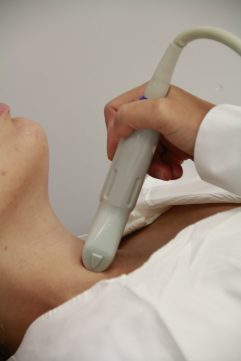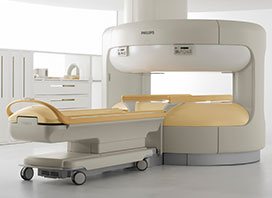DIAGNOSTIC ULTRASOUND ADULT

Ultrasound scan
Ultrasound scan is a safe, non-invasive method that allows screening of the body’s internal structure. With this method, high-frequency sounds that human ear can hear (over 20,000 Hz) are transmitted.
Special equipment records the way sounds pass through the body and allows the analysis of various organs, tumors, nodules, cysts and stones in the body. This method allows for a clear anatomy screening without transmitting any radiation to the patient.
Most common usage:
- Abdomen: Ultrasound scan is used to detect any stones in gallbladder or kidneys and in general to check the anatomy and any pathological findings in liver, kidneys, pancreas, and spleen and to follow-up transplanted kidneys.
- Ultrasound scan can detect normal condition of blood vessels, check for clots, artery stenosis – especially of carotid arteries leading to the brain and prevent any possible stokes.
- Pelvic ultrasound scan is used to image the uterus, ovaries and generally all organs within the pelvis. It usually helps to determine the cause of pain or bleeding in women.
- The ultrasound scan may also detect or search for cancerous tumors. It is also used to guide the biopsy needle that in recent years has replaced surgical intervention. Ultrasound scan is not only used for cancer detection and diagnosis but it is also used for monitoring treatment.
During pregnancy, ultrasound scan is the best diagnostic method to monitor how pregnancy progresses because of lack of radiation use.
Safety
No harmful effects of ultrasound scans have been reported in humans because, as mentioned, ultrasound scans use no ionized radiation.
Preparation for ultrasound scans
You will possibly receive specific instructions depending on the type of ultrasound scan you will do. Generally, the following guideline apply:
- Food and drink
If you are having an abdominal or pelvic ultrasound scan, you will be instructed not to eat or drink anything 8 hours before your scan. For thyroid or vessel ultrasound no preparation is required. - When to arrive
You have to be in the ultrasound department 10 minutes before your scheduled appointment. - What to wear
You must wear comfortable, loose-fitting clothes, but you may wear a hospital gown if you like. - What will I feel during the ultrasound test?
The doctor performing the scan will use a gel in order to ensure that the transducer is properly adjacent to the skin on the area to be scanned. The gel maximizes contact between the transducer sensor and the skin producing high-quality images. Depending on the examination, you may need to sit or lie in different positions, hold your breath or perform simple breathing exercises. - Transvaginal and Transrectal Ultrasound Scan
They are specialized tests that can provide better images than conventional ultrasound scans or other diagnostic methods. For these scans, a small transducer is inserted either in vagina or rectum. - Test results
Doctors-radiologists trained in ultrasounds give the


















